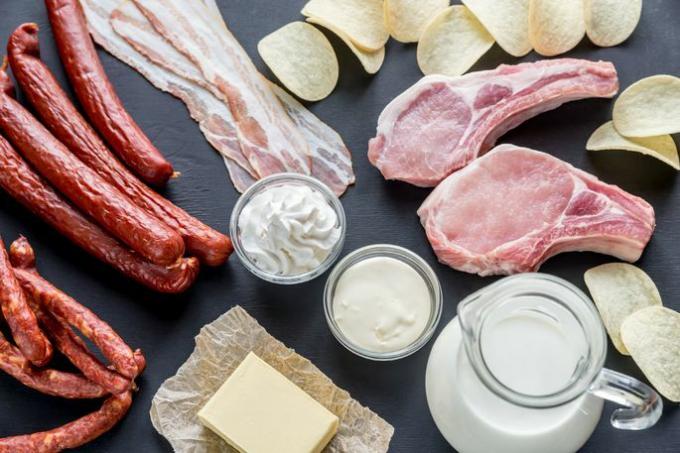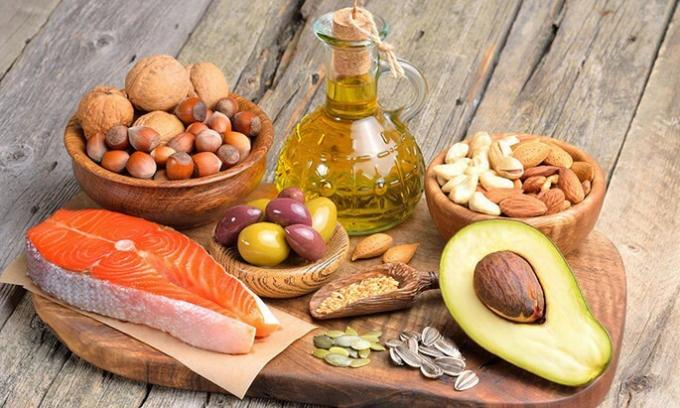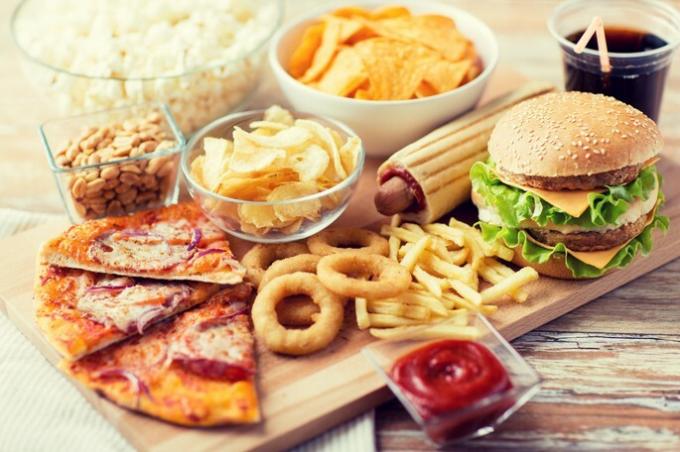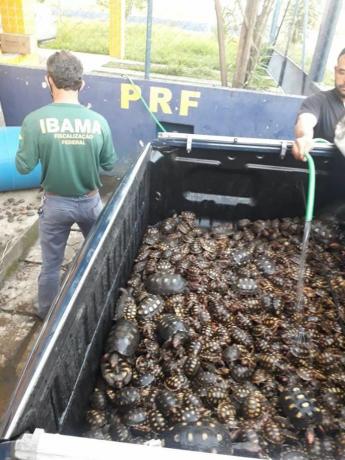The difference between the types of fat is directly linked to its origin, its molecular structure and the form of action in the human body.
Saturated fat is, in general, of animal origin and its consumption should be limited to small amounts, its excess can cause an increase in cholesterol and diseases.
Unsaturated fat is, in general, of vegetable origin, but it can also be found in fish. As long as it is consumed in a controlled manner, avoiding excesses, it has benefits for the body.
In turn, trans fat is produced synthetically from hydrogenation. It is very present in processed foods and its consumption should be avoided. Consumption of trans fats can pose health risks.
| Saturated fat | unsaturated fats | trans fats | |
|---|---|---|---|
| What is it? |
|
|
|
| Foods |
|
|
|
| Benefits |
|
|
|
| harm |
|
|
|
Nutritionists recommend moderate consumption, never exceeding the limit of 30% of total calories ingested or 20 grams daily.
Saturated fat
Saturated fats are mainly found in animal foods such as:
- meat;
- milk and its derivatives (butter, cheese, cream, yogurt, etc.);
Some products of plant origin:
- coconut;
- palm heart;
- palm oil, etc.

They are called saturated fats because they have single carbon bonds and a number of complete (saturated) bonds with hydrogen molecules.
In general, they present a certain degree of health risk because they are easily absorbed by the body. In this way, they bring about a considerable increase in the levels of low-density lipoproteins (low density lipoprotein - LDL, the "bad cholesterol").
Often, these fats are deposited obstructing vessels, veins, arteries, bringing risks of cardiovascular diseases.
However, its balanced consumption favors the functioning of the body through the storage of vitamins (A, D, E and K) and its importance for the development of cell walls.
Doctors and nutritionists generally recommend a consumption of up to 10% of total calories from this type of fat.
unsaturated fats
Unsaturated fats are mainly found in products of plant origin:
- olive oil;
- oil fruits (almonds, hazelnuts, cashew nuts, Brazil nuts, walnuts, etc.);
- avocado;
- seeds like sunflower and linseed.
This type of fat is also found in some animal foods such as eggs and "fatty fish" (salmon, tuna and trout).

Unlike saturated fats, unsaturated fats do not have all possible hydrogen bonds. Thus, they may contain one (monounsaturated) or more (polyunsaturated) carbon double bonds.
Moderate consumption of unsaturated fats provides an increase in high-density lipoproteins (high density lipoprotein - HDL, "good cholesterol").
This type of cholesterol helps remove other fat particles and has an antioxidant effect on the blood.
Unsaturated fats from the omega-3 and omega-6 family play an important role in nutrition because they are not produced by the body and must be ingested from food.
However, consumption of unsaturated fat greater than 25% of total energy can be harmful, facilitating weight gain.
trans fats
Trans fats are one of the great villains of healthy eating. They are found in many processed foods. They make food tastier and have a more pleasant consistency.
Some foods high in trans fats:
- Chips
- Stuffed cookies
- Ice creams
- Nuggets
- margarines

In general, this type of fat is produced through an industrial hydrogenation process. In this process, the unsaturated chains (carbon double bonds) begin to bond with hydrogen molecules, becoming saturated.
Unlike natural saturated fats, this type of fatty acid has a more linear bond (trans molecules).
This type of fat does not have any kind of benefit for the body. On the contrary, trans fats are very easily lodged in vessels, veins and arteries, causing a series of problems for the cardiovascular system. In addition, they are responsible for removing HDL from the blood.
There is no safe limit for consuming this type of fat. In some countries, such as Denmark and Switzerland, trans fat is prohibited in food manufacturing.
In Brazil, since 2008, Anvisa regulates the levels of trans fat in food and obliges manufacturers to declare its amount on the product label.
Interested? See also the difference between:
- light and diet
- types of carbohydrates
- greens and vegetables



